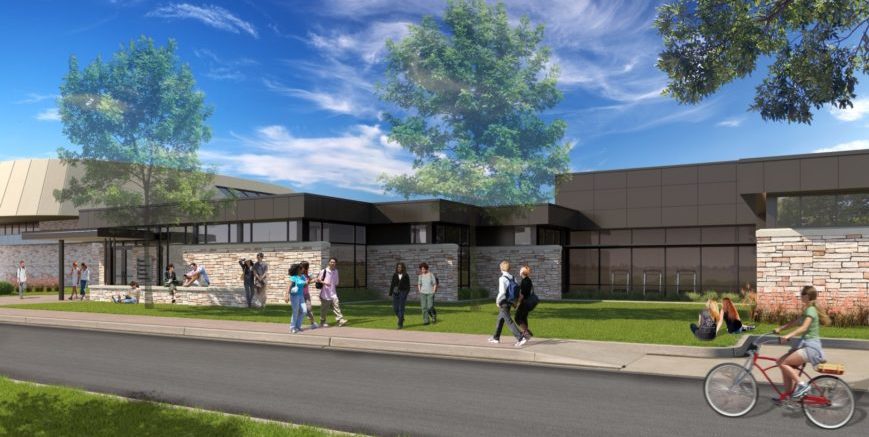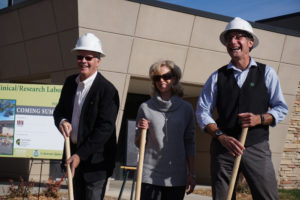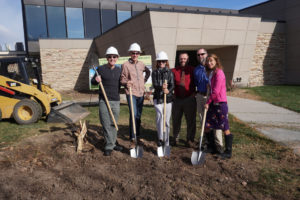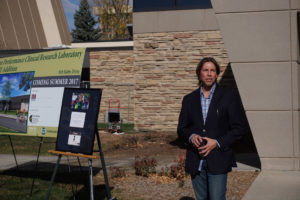Health and Exercise Science breaks ground on lab expansion
by Jeff Dodge | November 16, 2016 1:30 AM
Endnotes:
- Human Performance Clinical/Research Laboratory: http://www.hes.chhs.colostate.edu/research/
- the late Gay Israel: http://source.colostate.edu/in-memory-distinguished-leader-in-health-and-exercise-science-richard-g-israel/
- [Image]: http://source.colostate.edu/wp-content/uploads/2016/11/HPCRL-groundbreaking-1.jpg
- www.advancing.colostate.edu/HPCRL: http://www.advancing.colostate.edu/HPCRL
- [Image]: http://source.colostate.edu/wp-content/uploads/2016/11/HPCRL-groundbreaking-2.jpg
- [Image]: http://source.colostate.edu/wp-content/uploads/2016/11/HPCRL-groundbreaking-3.jpg
- Heart Disease Prevention Program: http://www.hes.chhs.colostate.edu/outreach/hdpp/
- CSU Program of Research and Scholarly Excellence: https://vpr.colostate.edu/prse/
- one of five to be funded: http://source.colostate.edu/five-university-programs-receive-funding-greater-impact/
- Department of Health and Exercise Science: http://www.hes.chhs.colostate.edu/
- College of Health and Human Sciences: http://www.chhs.colostate.edu/
- Department of Construction Management: http://www.cm.chhs.colostate.edu/
Source URL: https://source.colostate.edu/health-exercise-science-breaks-ground-lab-expansion/
Copyright ©2024 SOURCE unless otherwise noted.

 [3]
[3] [5]
[5] [6]
[6]